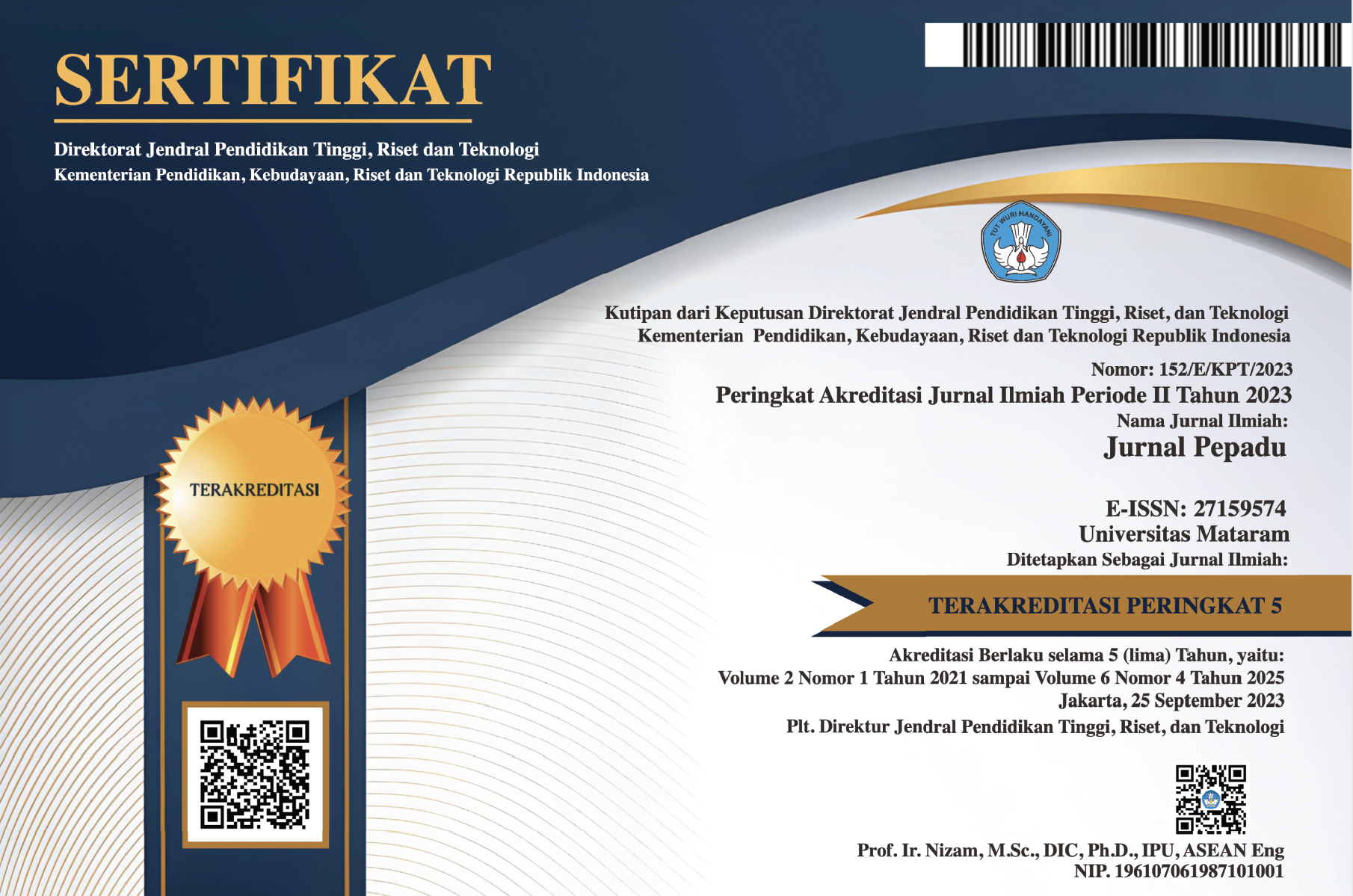OBSERVASI KESEHATAN LINGKUNGAN PADA RUMAH KELUARGA DENGAN ANAK BERISIKO STUNTING DI KECAMATAN SEKOTONG SEBAGAI UPAYA PENCEGAHAN DINI
DOI:
https://doi.org/10.29303/pepadu.v6i3.7024Keywords:
Environmental health, Sanitation, Stunting, SekotongAbstract
Environmental sanitation, hygiene, and access to clean water are crucial factors in preventing infectious diseases that contribute to stunting among children under five. Adequate sanitation facilities—such as the availability of clean water and proper waste disposal systems—are fundamental human needs that support a healthy quality of life. Poor hygiene practices, particularly among young children, can increase the risk of various infectious diseases. Therefore, to sustainably reduce stunting rates, interventions should not only focus on nutritional fulfillment but also encompass improvements in environmental quality, education on clean and healthy living behaviors, and the provision of adequate sanitation facilities. This community service activity was conducted at the Sekotong Community Health Center, West Lombok Regency, targeting mothers aged ≥18 years with children aged 2–4 years. A total of 33 respondents completed questionnaires assessing their household environmental sanitation and clean and healthy living behavior (PHBS), followed by the delivery of educational materials and interactive learning sessions. The results indicated that most respondents used piped water/PDAM (36.36%) and refill water (33.30%) as their main drinking water sources, with the majority reporting good physical water quality (75.75%). Approximately 84.84% of households had latrines, while wastewater management was almost evenly split between closed drainage systems (51.51%) and open drainage (48.48%). Waste management was predominantly through burning (54.54%), though a small proportion (12.12%) still disposed of waste improperly. Handwashing practices among toddlers were relatively good, with 48.48% reported to wash hands with soap and running water at certain times














